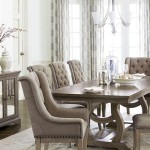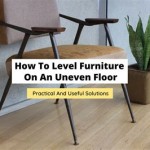Apartment Size Furniture for Small Spaces: Maximizing Functionality and Style
Living in a small apartment or condo presents unique challenges when it comes to furnishing a comfortable and functional living space. Choosing the right furniture is paramount to making the most of limited square footage, ensuring that every piece contributes to both aesthetics and practicality. Apartment size furniture is specifically designed to address these constraints, offering scaled-down dimensions without sacrificing quality, style, or comfort.
The selection process for apartment size furniture necessitates careful consideration of space, lifestyle, and budget. A well-planned approach ensures that the furniture chosen enhances the living environment rather than overwhelming it. This article will explore key considerations and strategies for selecting apartment size furniture that effectively maximizes space and reflects individual style and needs.
Prioritizing Multi-Functional Furniture
In small living spaces, furniture that serves more than one purpose is invaluable. Multi-functional pieces provide versatility and help to minimize the need for separate items, ultimately freeing up valuable floor area. Several types of furniture excel in this category.
Sofa beds, for example, are a classic choice for small apartments. During the day, they function as comfortable seating, and at night, they easily convert into a bed for guests or the resident. The mechanism should be durable and easy to operate. Quality sofa beds often incorporate storage space underneath, providing a convenient location for linens and pillows.
Ottomans with storage compartments are another excellent option. These can serve as footrests, extra seating, or even coffee tables, while simultaneously concealing blankets, books, or other household items. The size and shape of the ottoman should be carefully considered to ensure it complements the overall design and doesn't impede movement within the space.
Drop-leaf tables and expandable dining tables offer flexibility for dining and entertaining. These tables can be adjusted to accommodate different numbers of people, saving space when not in use. When selecting a drop-leaf or expandable table, consider the ease of extension and contraction, as well as the stability of the table when fully extended.
Storage beds are designed with drawers or compartments built into the base, providing ample space for clothing, bedding, or other items. This eliminates the need for a separate dresser or chest of drawers, which can be particularly beneficial in small bedrooms. The height of the bed and the accessibility of the storage compartments are important factors to consider.
Wall-mounted desks and shelving units are ideal for creating a workspace or display area without taking up floor space. These can be customized to fit individual needs and preferences, and they can be easily adjusted or reconfigured as necessary. When installing wall-mounted furniture, it is crucial to ensure that the wall is strong enough to support the weight of the furniture and its contents.
Scaling Down Furniture Dimensions
Choosing furniture that is appropriately sized for the available space is essential. Overly large furniture can make a small apartment feel cramped and cluttered, while undersized furniture can look out of place and fail to provide adequate functionality. Measuring the available space before shopping for furniture is a critical step in the selection process.
Sofas and sectionals designed for small spaces typically have shallower depths and shorter lengths than standard models. These smaller sofas can still provide comfortable seating for two or three people without dominating the room. When choosing a sofa, consider the arm style. Narrow arms can maximize seating space, while bulky arms can take up valuable room.
Chairs should also be scaled down to fit the room. Armless chairs or chairs with narrow arms can save space, and clear acrylic chairs can visually disappear, making the room feel larger. Consider the chair's purpose when selecting its size and style. A comfortable armchair for reading will require more space than a simple dining chair.
Coffee tables and end tables should be proportionate to the size of the sofa and chairs. Small, lightweight tables are easy to move around and can be used in various locations as needed. Nesting tables are a particularly useful option, as they can be stored compactly when not in use.
Beds should be chosen based on the individual's needs and the size of the bedroom. A full-size bed may be sufficient for a single person, while a queen-size bed may be necessary for a couple. A platform bed can eliminate the need for a box spring, saving space and creating a more streamlined look. Consider the dimensions of the headboard and footboard, as these can add significant length to the bed.
Dining tables should be chosen based on the number of people who typically dine together. A small round table can be a good choice for a single person or a couple, while a rectangular table can accommodate more people. Consider the space around the table to ensure that there is enough room to move around comfortably.
Optimizing Vertical Space
In small apartments, utilizing vertical space is a key strategy for maximizing storage and creating a sense of openness. Tall bookshelves, wall-mounted cabinets, and vertical storage units can all help to make the most of limited square footage.
Floor-to-ceiling bookshelves provide ample storage for books, decorative items, and other household goods. These can be used to create a focal point in the room and can help to visually elongate the space. When selecting bookshelves, consider the adjustability of the shelves and the weight capacity of each shelf.
Wall-mounted cabinets are a versatile storage solution for kitchens, bathrooms, and living rooms. These can be used to store everything from dishes and cookware to toiletries and linens. Wall-mounted cabinets save floor space and keep items organized and easily accessible.
Vertical storage units, such as tall dressers and narrow cabinets, can provide ample storage without taking up a lot of floor space. These are particularly useful in bedrooms and bathrooms where space is limited. When selecting vertical storage units, consider the depth of the unit and the number of shelves or drawers.
Hanging shelves and organizers can be used to store items such as clothing, shoes, and accessories. These are particularly useful in closets and entryways. Hanging organizers can help to keep items off the floor and make it easier to find what you need.
Curtain rods placed high above the window frame can create the illusion of higher ceilings. This can make the room feel more spacious and airy. Choose curtains that are lightweight and flowy to maximize the effect.
Mirrors can also be used to create the illusion of more space. A large mirror on a wall can reflect light and visually double the size of the room. Mirrors can be placed strategically to reflect windows or other light sources.
Choosing Light Colors and Open Designs
Color palettes and furniture designs can dramatically impact the perception of space in a small apartment. Light and airy colors tend to make a room feel larger and more open, while dark colors can make it feel smaller and more enclosed. Similarly, furniture with open designs and transparent materials can help to create a sense of lightness and spaciousness.
White, cream, and light gray walls are classic choices for small apartments. These colors reflect light and create a sense of airiness. Accents of brighter colors can be used to add personality and visual interest. Consider using a monochromatic color scheme to create a cohesive and calming atmosphere.
Furniture in light colors, such as white, beige, and pastel shades, can also help to make the room feel larger. Avoid overly dark or heavy furniture, as this can make the room feel cramped. Upholstered furniture in light-colored fabrics can also brighten up the space.
Furniture with open designs, such as chairs with thin legs and tables with glass tops, can help to create a sense of lightness and spaciousness. These pieces allow light to pass through and visually minimize their presence in the room. Choose furniture with clean lines and minimal ornamentation to avoid cluttering the space.
Clear acrylic furniture is a popular choice for small apartments. These pieces are virtually invisible and can help to create a sense of openness. Acrylic chairs, tables, and shelving units can be both functional and stylish.
Mirrored furniture can also be used to create the illusion of more space. Mirrored side tables, dressers, and cabinets can reflect light and visually double the size of the room. Use mirrored furniture sparingly, as too much can be overwhelming.
Integrating Storage Solutions
Effective storage is crucial for maintaining a clutter-free and organized small apartment. Integrating storage solutions into the furniture itself, as well as utilizing clever storage hacks, can help to maximize the available space and keep belongings neatly organized.
Furniture with built-in storage compartments is a valuable asset in small living spaces. This includes sofa beds with storage underneath, ottomans with hidden storage, and beds with drawers in the base. These pieces provide convenient and easily accessible storage for a variety of items.
Shelving units can be used to store a wide range of items, from books and decorative objects to clothing and household supplies. Choose shelving units that are appropriately sized for the available space and that can be customized to meet your specific storage needs. Adjustable shelves allow you to reconfigure the unit as needed.
Baskets and bins are a versatile storage solution for small apartments. These can be used to store everything from toys and games to blankets and linens. Choose baskets and bins that are made from durable materials and that complement the overall design of the room.
Wall-mounted organizers can be used to store items such as mail, keys, and accessories. These are particularly useful in entryways and hallways, where space is often limited. Choose organizers that are both functional and stylish.
Under-bed storage containers are a great way to utilize the space under the bed. These containers can be used to store clothing, bedding, or other items that are not frequently used. Choose containers that are made from durable materials and that are easy to slide in and out from under the bed.
Over-the-door organizers can be used to store shoes, toiletries, or other small items. These are particularly useful in closets and bathrooms, where space is often limited. Choose organizers that are made from durable materials and that are easy to install.
By carefully selecting apartment size furniture and incorporating clever storage solutions, it is possible to create a comfortable, functional, and stylish living space, even in the smallest of apartments.
:max_bytes(150000):strip_icc()/rsw984h656-d6d00a18536d4afc8b48c0da03702ea7.jpeg?strip=all)
40 Small Apartment Living Room Ideas To Maximize Space And Style

17 Tips Tricks For Small Space Living

30 Products Furniture For Small Spaces Tiny Homes Studio Apartments

Small Apartment Sofas Sectionals And Sleepers Narrow Doors Stairs

15 Space Saving Furniture Ideas For Small Apartments Homes Extra Storage

4 Need To Know Tips For Decorating A Small Space
:max_bytes(150000):strip_icc()/NYCApt8-68b41d5b1d0c49da9a269a0f7bf45647-f98b21a90cec4803836530b96fc82560.jpeg?strip=all)
40 Small Apartment Living Room Ideas To Maximize Space And Style

How To Pick Furniture For Your Apartment Or Small Space

25 Small Space And Furniture Ideas For Your Home

Small Living Room Ideas Decorating








